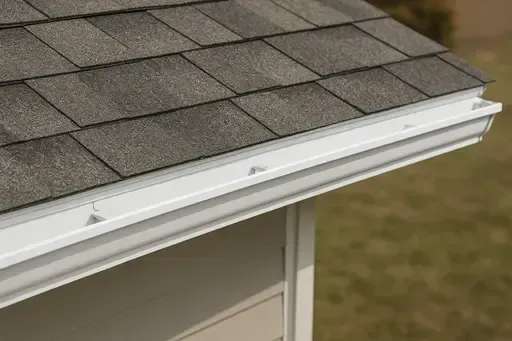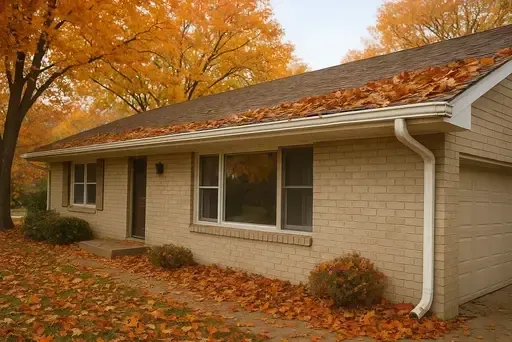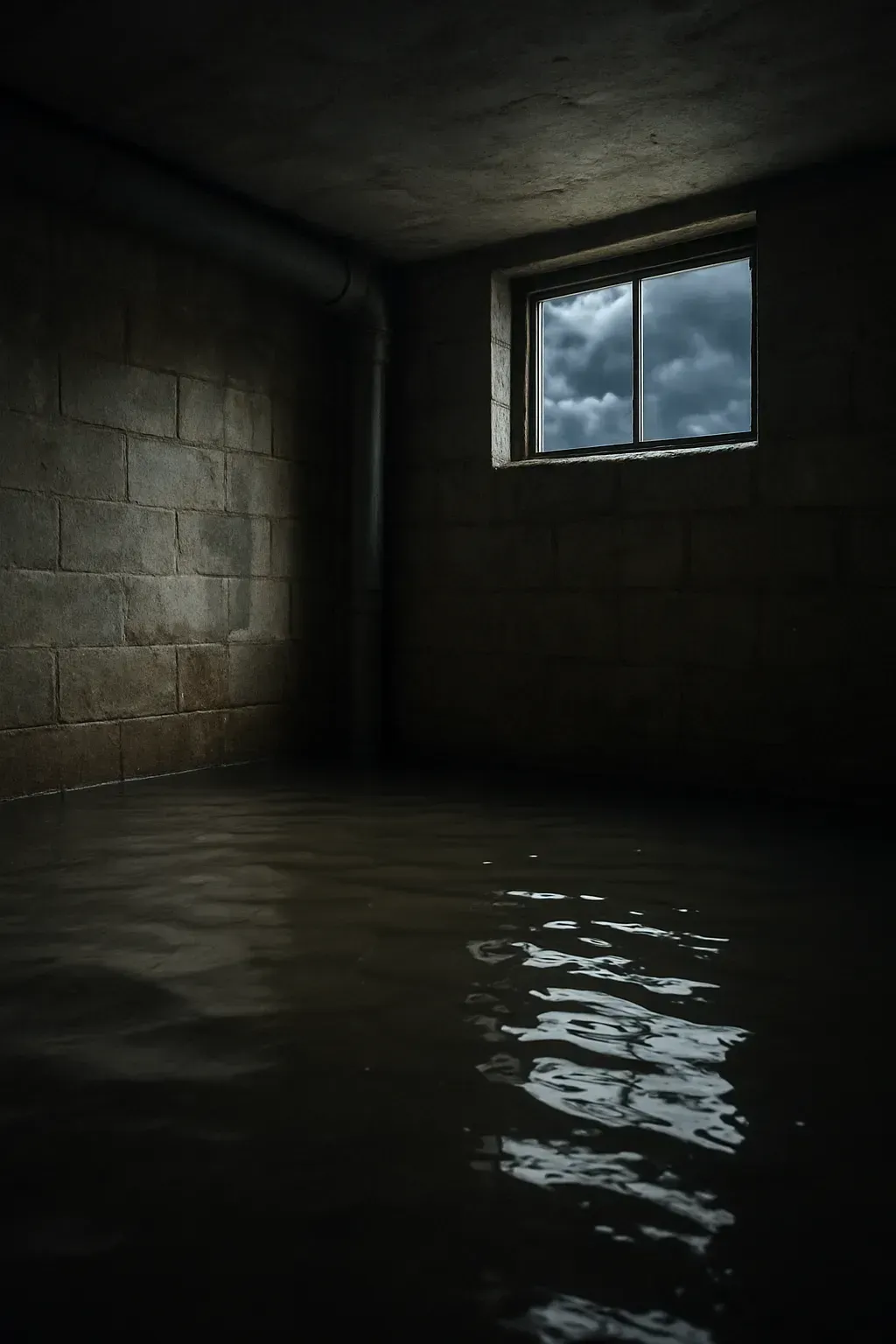Ice dams in Kansas: Prevention with ventilation, insulation, and gutters
As late October settles over Wichita, homeowners know what's coming. The leaves are turning in College Hill, and winter is right around the corner. Kansas winters might seem mild, we usually get 10 to 15 inches of snow each year, but our up-and-down temperatures create a big problem for your roof and gutters: ice dams.
Here's what happens. Heat leaks out of your attic and melts the snow on your roof. That water runs down toward your gutters but freezes again when it hits the cold edge of your roof. This creates an ice wall that blocks your gutters and traps water on your roof. When more snow melts, that trapped water has nowhere to go. It backs up under your shingles and leaks into your home.
Whether you live in a historic home in Riverside or a ranch house in Bonnie Brae, ice dams can damage your Wichita home. The good news? You can stop ice dams before they start with the right insulation, ventilation, and gutter care.
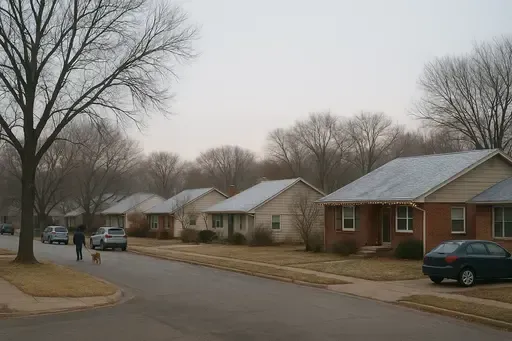
Understanding Ice Dams: A Kansas Winter Reality
Ice dams happen when your roof gets too warm on top but stays cold at the edges. In Wichita, we get the perfect storm for ice dams. Our winter temperatures jump around a lot. One day it might be 44 degrees and sunny. The next night it drops to 25 degrees or lower.
This is what makes ice dams form in Kansas homes. During the warm, sunny afternoon, snow on your roof melts. At night when temperatures drop, that water freezes solid at your roof's edge and in your gutters. Day after day, this freeze and thaw cycle builds up more ice. Pretty soon, you have a thick ice dam blocking your entire gutter system.
Wichita homes with certain features face bigger risks. If you live in College Hill or Riverside in one of those beautiful old Victorian homes with steep roofs and lots of angles, you're more likely to get ice dams. Ranch style homes from the 1950s and 60s in areas like Bonnie Brae can have problems too, especially if the attic insulation is old or thin. Any home where heat escapes into the attic is at risk. And with Wichita's basement construction style, warm air from below can rise up and make the problem worse.
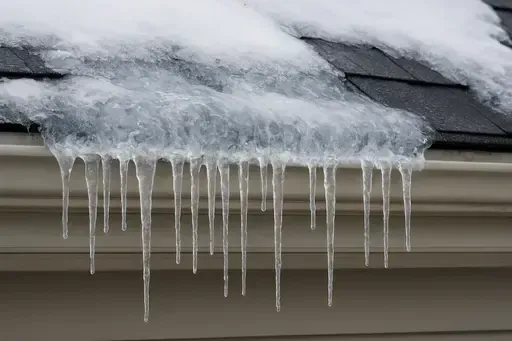
The Hidden Costs: What's at Stake for Your Wichita Home
Ice dams don't just look bad. They can seriously damage your home and cost you thousands of dollars in repairs.
When ice blocks your gutters, water backs up under your roof shingles. This water seeps into your attic, then into your walls and ceilings. You might see water stains on your ceiling or walls. Paint starts to peel. In bad cases, your ceiling can buckle or even collapse. Your floors might warp and buckle too.
The damage doesn't stop there. Wet insulation loses its power to keep your home warm. This means your heating bill goes up all winter long. Moisture trapped in your walls creates the perfect spot for mold and mildew to grow. This can make your family sick and costs even more money to fix.
Your gutters and roof take a beating too. Heavy ice can pull gutters right off your house. It bends and breaks downspouts. Shingles get loose or torn off completely. Once your roof is exposed, rain, snow, and debris can get underneath and cause even more damage.
Don't forget about safety. Those big icicles hanging from your gutters look pretty, but they're dangerous. They can fall and hurt someone in your family or a pet. For historic homes in neighborhoods like Crown Heights and Delano, ice dam damage can hurt your home's value and charm.
The best part? You can avoid all of this damage. It starts with understanding how to keep heat inside your house where it belongs.
Your Home's Architecture Matters
Not all Wichita homes face the same ice dam risks. Your home's age and style matter.
Historic homes in College Hill and Riverside have the biggest problems. Victorian homes from the 1880s have steep roofs with lots of peaks and valleys. These complex designs create more spots where ice builds up and blocks gutters. Many older homes lack modern insulation too.
Ranch homes are common in Bonnie Brae and Southeast Wichita. Built in the 1950s and 1960s, many still have thin, weak insulation. Even newer homes in West Wichita or Maize can get ice dams without proper insulation and ventilation.
Here's what makes Wichita special. Almost every house has a basement. Warm air rises from your basement into your attic. If that air escapes into the attic, it heats your roof and melts snow. That's why air sealing and ventilation are so important here.

Ice Build Up Prevention Strategies
Prevention Strategy #1: Proper Attic Insulation
Good attic insulation is your best defense against ice dams. Here's why it matters so much.
About one third of your home's heat escapes through your attic ceiling. When that warm air gets into your attic, it heats up the roof from below. This melts the snow on top, and that's when ice dams start forming in your gutters.
The right insulation keeps that heat inside your house where it belongs. For Kansas winters, you want insulation with an R-value of at least R-38 to R-49. The R-value tells you how well the insulation stops heat from escaping. Higher numbers mean better protection.
Walk up into your attic and take a look. Can you see the floor joists? If your insulation doesn't cover them completely, you need more. Look for wet spots or compressed areas. Wet insulation doesn't work. It needs to be replaced right away. Old insulation that looks flat and packed down has lost its power too.
Adding insulation is something many Wichita homeowners can do themselves. You can buy rolls of fiberglass insulation at any hardware store. Just lay it between the joists, making sure not to cover any vents. If your attic already has some insulation, add the new layer on top going the opposite direction.
But be careful. If you find a lot of water damage or mold, or if your attic is hard to access, call a professional. They can assess your whole attic and make sure the job gets done right. A good insulation job will keep your home warmer, lower your heating bills, and stop ice from building up on your roof and gutters.
Prevention Strategy #2: Attic Ventilation Systems
Insulation keeps heat in your house. Ventilation keeps your attic cold. You need both to stop ice dams.
Here's how it works. Good ventilation lets cold outside air flow through your attic. This keeps your attic the same temperature as the air outside. When your attic stays cold, your roof stays cold too. Cold roofs don't melt snow. No melting means no water running down to freeze in your gutters.
The best ventilation system uses two types of vents working together. Ridge vents sit at the very top of your roof along the peak. Soffit vents are under the edges of your roof where it hangs over your walls. Cold air comes in through the soffit vents at the bottom. As it warms up slightly, it rises and flows out through the ridge vents at the top. This creates constant airflow that keeps your whole attic cold.
How much ventilation do you need? A good rule is one square foot of ventilation for every 150 square feet of attic space. So if your attic is 900 square feet, you need six square feet of vents total. Split that evenly between ridge vents and soffit vents.
Many older Wichita homes don't have enough vents. Some have their soffit vents blocked by insulation. Walk around your house and look up at the soffits. You should see vent openings or screens. If you don't see any, your attic can't breathe properly.
Adding ventilation usually needs a professional roofer. They'll cut openings in the right spots and install proper vents. It's worth the cost. Good ventilation protects your roof, stops ice dams, and makes your insulation work better too.
Prevention Strategy #3: Air Sealing Critical Areas
You can have great insulation and perfect ventilation, but warm air will still get into your attic if you have air leaks. Sealing these leaks is just as important as the other steps.
Think of your attic floor like a boat. Even small holes let water in. The same thing happens with warm air. It finds every tiny crack and gap to sneak through. Once it's in your attic, it warms up your roof and creates ice dams in your gutters.
The biggest air leaks happen around things that go through your ceiling. Light fixtures are major culprits, especially recessed lights that stick up into the attic. Bathroom exhaust fans are another common leak spot. Plumbing pipes and electrical wires that go through the attic floor let air escape. The attic access door or pull down stairs almost always leak air. And chimneys create huge gaps that let warm air pour into your attic.
Here's how to seal them. Use caulk for small cracks around pipes and wires. For bigger gaps, use expanding foam spray. You can buy both at any hardware store. For the attic door, add weather stripping around the edges and put a piece of rigid foam insulation on top of the door itself.
Be careful around chimneys and metal flues. These get hot, so you can't use regular foam. Use special high temperature caulk instead. Keep all insulation at least three inches away from these hot surfaces.
Air sealing is a great DIY project for Wichita homeowners. It doesn't cost much and makes a big difference. On a cold, windy day, hold your hand near these spots in your living space. If you feel cold air, you've found a leak that needs sealing.
Prevention Strategy #4: Gutter Maintenance and Heat Solutions
Your gutters play a key role in ice dam prevention. Clean, working gutters help water drain away from your roof. Clogged gutters make ice dams worse.
Before winter hits Wichita, clean all the leaves, twigs, and debris out of your gutters. Late October is the perfect time. After the leaves fall but before the first snow, get up on a ladder and scoop everything out. Make sure your downspouts are clear too. Run water through them with a hose to check for blockages.
Check that your gutters slope slightly toward the downspouts. Water should flow easily, not sit in puddles. If you see standing water, your gutters might be sagging or installed wrong. Fix this now before ice forms.
Where do your downspouts drain? They should carry water at least five feet away from your house foundation. If water pools near your house, it can refreeze and cause problems.
Sometimes even with perfect insulation and ventilation, ice still forms at the roof edge. For these tough spots, you can add heat cables. These electric cables zigzag along the edge of your roof and through your gutters. They melt channels in the ice so water can drain.
Heat cables work well for problem areas but use electricity all winter. Only use them where you really need them. They're a good solution for homes in College Hill or other historic Wichita neighborhoods where you can't change the roof design.
Taking Action Before Winter Arrives
Winter comes fast in Kansas. The time to protect your Wichita home is right now, in late October, before the first snow falls.
Start with a roof inspection. Look for damaged or missing shingles. Check your gutters and downspouts. Then head up to your attic. Check your insulation level and look for any wet spots or air leaks. These simple checks can save you thousands of dollars in repairs.
If you find problems you can't fix yourself, call a local Wichita roofing or insulation professional. They can assess your whole system and make a plan. Most companies are less busy in fall than winter, so you'll get faster service and better prices.
Some jobs are easy DIY projects. You can clean your own gutters, add weather stripping to your attic door, and seal small air leaks with caulk. But bigger jobs like adding ventilation or replacing old insulation are better left to the pros.
Don't wait until ice dams form. Once water starts leaking into your home, the damage is already happening. Prevention is always easier and cheaper than repairs. Protect your Wichita home now, and you'll stay warm and dry all winter long.

